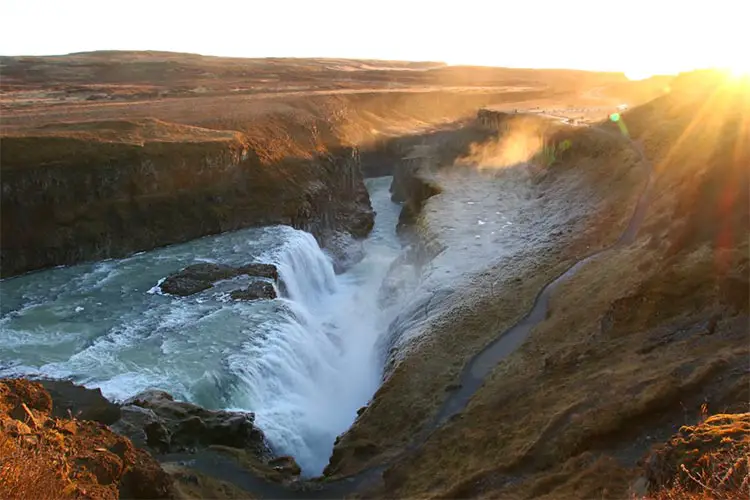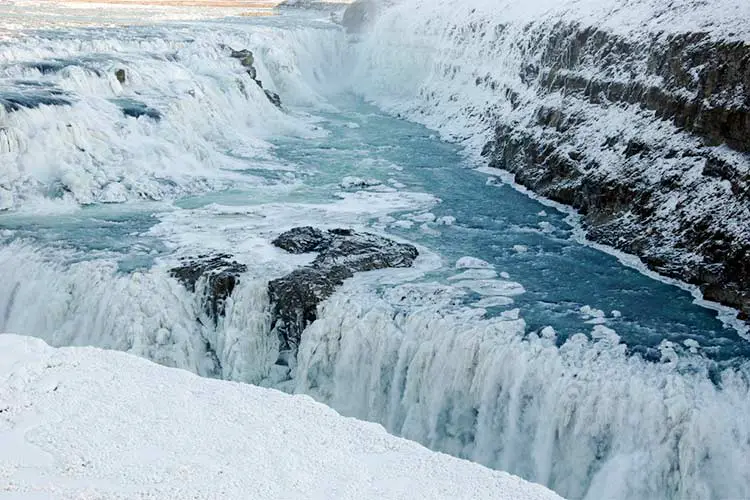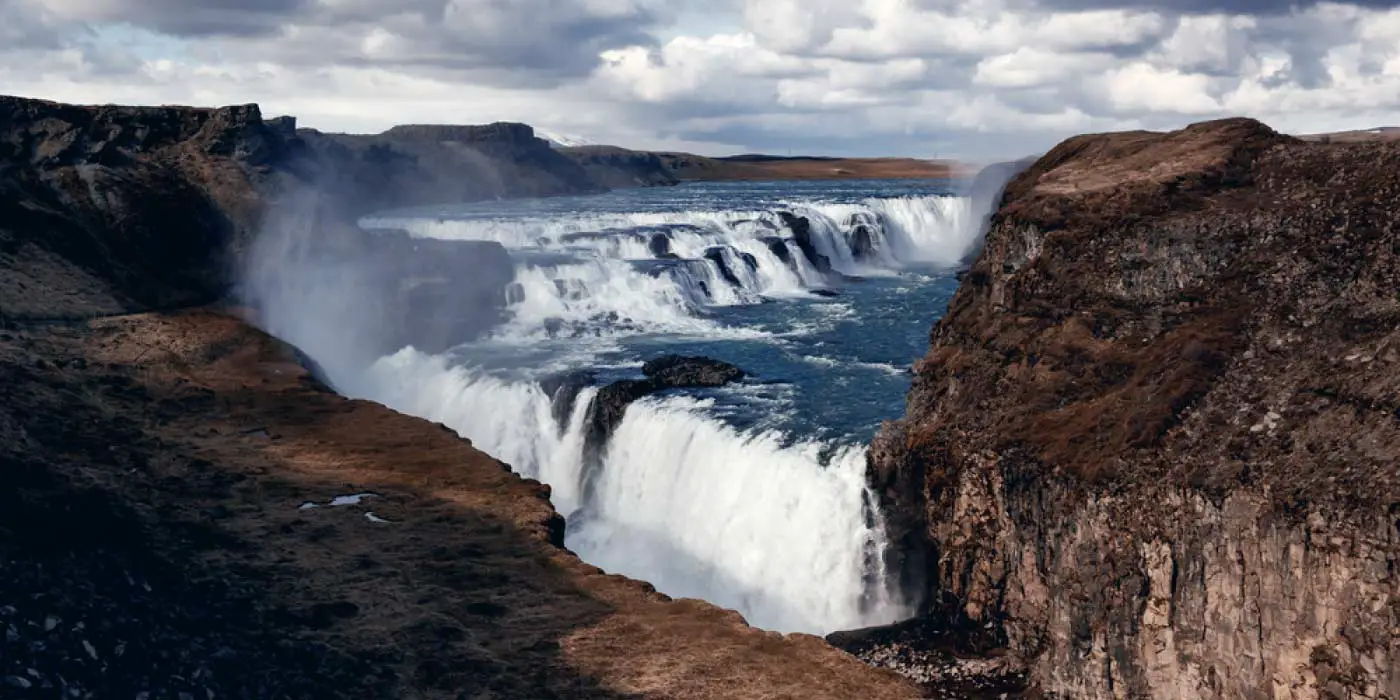Experience Gullfoss on Iceland’s Golden Circle
If you’re the type of traveller who thrives for those off the beaten track experiences, then Iceland will be right up your street. Situated off the shores of Northern Europe, Iceland is a fascinating place, showcasing a bizarre landscape, juxtaposed with its frigid proximity to the arctic and it’s ferocious volcanic activity. Iceland sits between the Arctic Ocean and the North Atlantic, although it has a more favourable climate than one might think. The North Atlantic Current gifts Iceland higher average temperatures than other countries on the same latitude, although, let’s not kid ourselves, it can get pretty cold there too!
In contrast, Iceland is one of the most active volcanic regions in the world, sitting on the Iceland Hotspot and the Mid Atlantic Ridge. Its propensity for volcanic activity provides many interesting sites on the island, including geysers; springs that build up pressurized water and erupt, often shooting jets of boiling hot water more than 70 meters in the air. Iceland is also home to two UNESCO World Heritage sites, Pingvellir National Park and the volcanic island, Surtsey, both inscribed on UNESCO’s list for their outstanding universal value.
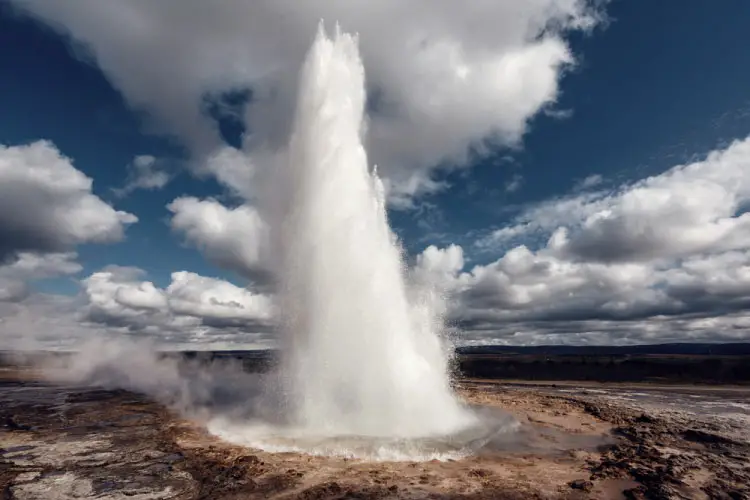
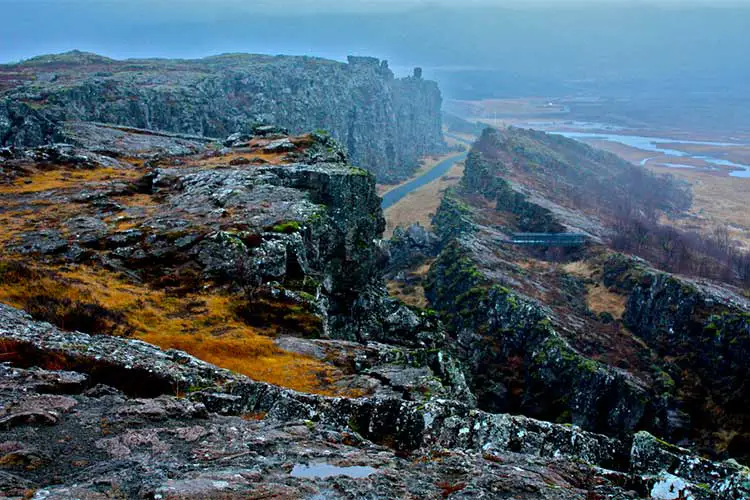
Aside from Iceland’s rind-road which one could spend weeks exploring, one of the most popular routes from Iceland’s capital, Reykjavik is the “Golden Circle” which can be done in a single day. The Golden circle focuses on four locations, the Pingvellir National Park, the Great Geysir (both shown above), the iconic waterfall of Gullfoss and a volcanic crater lake named Kerid Crater. The circle can be driven in either direction, but bear in mind you will have to double back on yourself once you have visited Gullfoss. To give you some perspective, Gullfoss is about 115 kilometres from Reykjavik, an easy drive will take about an hour and a half. Listen carefully on your approach to Gullfoss; the powerful waterfall produces a siren-like thunderous call across Iceland’s jagged wilderness.
From the car park, you descend a long staircase before enjoying a pleasant walk along a black concrete path that runs parallel to the massive crevice the water ultimately ends up following into. A viewing platform provides you with a stunning look at the waterfall, which features two successive drops that rapidly plunge down into the aforementioned crevice. If you are fortunate enough, you might be able to catch a glimpse of rainbows over the fall, produced as its mist reflects the sunlight. Although some people prefer visiting Gullfoss during the winter season, when it’s covered majestically with snow and ice, it is perhaps best visited during summer when you can truly experience the unimpeded power of one of Iceland’s move revered natural wonders.
